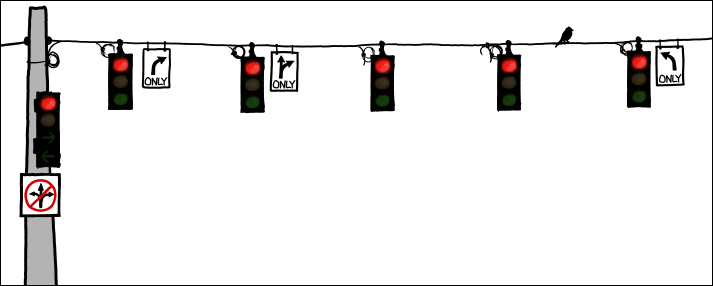SLATE 2012 LIVE TWEET EXPERIENCE
BACKGROUND
After completing AWSD and WASDA’s Amplified Administrators
course taught by Brad Saron,
I was excited about the culminating activity - attending the 2012 Wisconsin SLATE convention
and using Twitter to “live tweet” the convention with our hashtag: #ampedadmin. Previously our class had
spent a great deal of time creating accounts and learning how to navigate Twitter.
We mined educational sites and set-up feeds using Google Reader and would tweet
out items of interest to fellow class members at our leisure.
However, that was all in slow motion. I had not yet had the
experience of trying to “live tweet” from a conference. Nor did I understand what should be tweeted
or how this was to be done in real time.
I decided to “practice”.
A LEARNING CURVE
In early November, I was attending a “Convening Conference”
sponsored by The Institute at CESA 1. They announced that the conference could
be “live tweeted” using the hashtag #C12012.
I decided this was my opportunity. I usually use my computer to take notes, so
I had a word document open. I decided to open Twitter on another tab. I navigated
to #C12012 and saw that some people started tweeting the obligatory “Excited to
be at…”, so I checked in with my bland “I’m here at the conference, too”
statement, whatever it was, still not sure why anyone cared.
As the keynote speaker began, I noticed a number of people
tweeting out some of the main points that were being made. Being a novice, I
had a hard time juggling. When I heard something profound, I would diligently
type it into twitter. But by the time I had reduced it to the 140 characters
and included the hashtags, I had missed a ton of what the speaker was saying
and seemed to be out of step with my tweets. I noticed there was a particular
tweeter that seemed spot on and always beat me to the “tweet” with something
more profound than I was going to offer. Meanwhile, I had lost some important
points that I wanted to get down in my notes for further reference. After a bit
of fumbling, it hit me. I still wanted to take some notes on my word document,
but this would also provide an excellent source for me to quickly cut and paste
items of interest into a “tweet”. I found this practice to work. I was less
concerned about “getting something into twitter” and more at ease with the
mechanics of going from one source to another. It still was a little overwhelming
trying to keep up with the Twitter feeds, but I noticed that if I missed something
that I wanted to quickly jot down, it was likely that someone would put it in a
tweet within a minute or so. I was "getting" how this could be a source of “community
notes” about the event.
TWEETING at SLATE 2012
Armed with my newfound technique, I was excited to be at
SLATE and to get into the “buzz” of the twittersphere. I still liked the idea
of having notes about things that I found important, but wanted to know what
other people thought was important, too.
Logging into #SLATE2012, I found a number of classmates who
had “checked in”. At this conference of over 500 people, I immediately felt as
though I was with a number of friends, even though I had not actually seen any of
them yet. It was interesting to read the
tweets during the keynote presentations, as we were all hearing the same thing
but commenting from our own perspectives. Equally interesting was during the
break-out sessions. I could gather information from a number of different
sessions beyond the one I was attending based on the tweets being sent out by
others. It was amazing how much more information I was able to come away with
than I had been able to at other conferences I had attending without tweeting. I felt much more like a participant.
There were a number of important things that I experienced due to “live tweeting” at this conference.
-
Access to resources – Speakers often talked
about certain resources during presentations. Invariably, someone would tweet
out a link to the resource the speaker was talking about. I found many useful
links this way and also found myself “Googling” sources and tweeting them out
for other people.
(Example tweets: Julie Mathiesen talking about free on-line textbook resources http://www.ck12.org/ #slate2012 #ampedadmin, WI Digital Learning Day - Feb 6 https://sites.google.com/a/dpi.wi.gov/wisconsin-digital-learning-day/ …#slate2012 #ampedadmin)
(Example tweets: Julie Mathiesen talking about free on-line textbook resources http://www.ck12.org/ #slate2012 #ampedadmin, WI Digital Learning Day - Feb 6 https://sites.google.com/a/dpi.wi.gov/wisconsin-digital-learning-day/ …#slate2012 #ampedadmin)
-
Better resources than the presenter – In some
cases, issues that the audience had brought up were addressed better by tweets
from the audience than by what the presenter was able to offer. This truly shows the power of a network.
Obviously, presenters are prepared for certain things and can easily be put on
the spot if questions go in a different direction. However, audience participants
have vast expereinces and resources that can be easily shared through this
format.
-
Learning about people’s passions – It was
exciting to see what drew the interest of the crowd and whether it matched what
I was thinking. Here was a tweet that was sent both by me and one of my
classmates: Ruston Hurley: “You have my permission to innovate WILDLY”
-
Colleagues at home “watching” – A number of
teachers in the district weren’t able to attend SLATE 2012, but said they’d be “following
the conference on Twitter”. It was interesting to know that they were able to
experience the conference in some way, even without attending. I was also able
to dialog with them about it upon my return.








